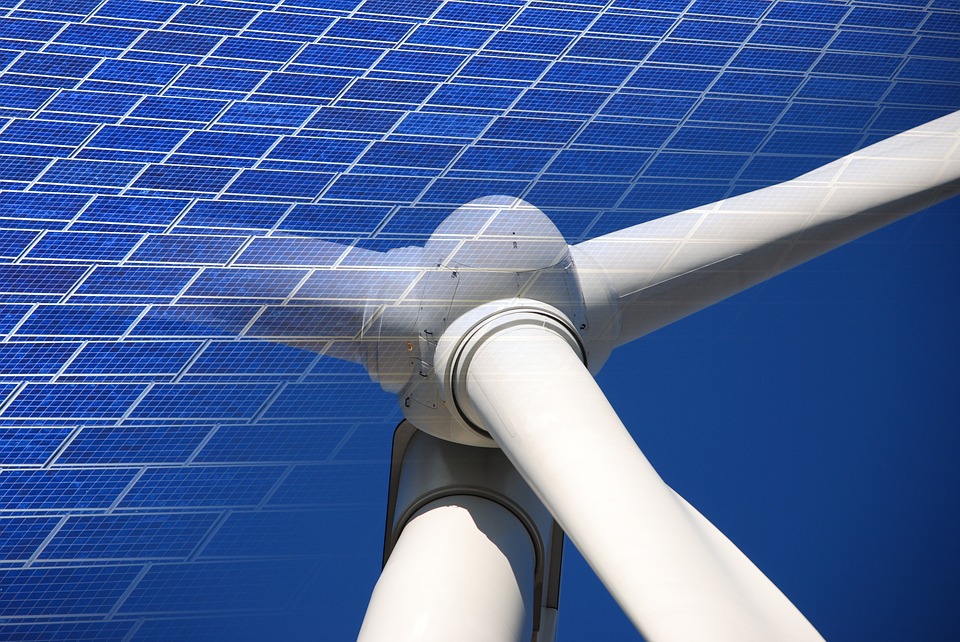Unless current deployment trends are accelerated, the U.S. appears on track to fall short of the White House’s goal of 80% clean energy supply by 2030.
Analysis done of a decade of data from the Federal Energy Regulatory Commission (FERC) and Energy Information Administration (EIA) suggests that renewables penetration will land somewhere between 33% to 50%.
EIA’s most recent electric power monthly report reveals that renewable energy sources provided 22.5% of U.S. electrical generation during the first quarter of 2021. A decade ago, that figure stood at 13.75%. That means renewables have grown at a pace of less than 1 percentage point of the total energy mix each year in 10 years.

Image: NASA
Nearly all of the growth can be attributed to solar and wind, which grew from 3.3% to 13.9% of the mix. Biomass, geothermal, and hydropower remained relatively level.
FERC forecasts high-probability additions and retirements during the upcoming three years for each energy source. The next three years are estimated to see 14 GW of fossil fuel and nuclear retirements, and 64 GW of solar and wind additions. If that occurs, domestic generating capacity of renewables would reach nearly 29% by April 2023, growth rate of 1.35 percentage points each year.
50% by 2030?
From 2015 to 2020, wind has achieved a growth rate of 10% per year, and solar has averaged 30%, though it has slowed to 21% in the past three years. Assuming a 10% and 20% growth rate for wind and solar, respectively, both sources would produce roughly the same amount of power by 2030, each contributing 20% to the overall mix. Add in the steady 10% from biomass, hydro, and geothermal, and renewable penetration reaches 50% by 2030.
FERC’s short-term outlook supports these figures, as it anticipates in the next three years “high probability” additions of 42.8 GW of utility scale solar, a 74% addition to the current 57.9 GW of capacity in this market segment. As much as 58.2 GW could be in the three-year pipeline for solar, said FERC. Wind “high probability” projects stand at 20.5 GW.
…and 80% by 2030?
EIA’s historical growth data suggest a faster growth rate is possible for renewables. But to do so, annual growth would need to hit top-line numbers from previous years. In 2016, 2017, and 2020, wind energy grew at a rate of 12% or more. And solar surpassed an average 30% growth rate from 2014 to 2020.
If these rates could be sustained each year over the coming decade, wind would account for 25% of U.S. generation, and solar would provide nearly 45%. Adding 10% from bio, hydro and geothermal means that the Biden administration goal of 80% by 2030 could be met.
This outlook did not include the impact of nuclear power, which the White House said would play a role in decarbonization as well, but the plans only expressly mentioned operating existing plants, not building new capacity. Carbon capture technology was also highlighted in the Biden fact sheet.
FERC said that a national clean energy standard could make such a scenario realistic. A clean energy standard could follow the tried-and-proven model set by state-level Renewable Portfolio Standard (RPS), but would work at a national level, addressing states that have not yet enacted RPS, or states that have relatively weak RPS established.
This content is protected by copyright and may not be reused. If you want to cooperate with us and would like to reuse some of our content, please contact: editors@pv-magazine.com.









I think a better picture results from understanding that a massive drop in cost occurred in late 2017. The wind and solar markets didn’t really respond until 2020, when both resources set all time records for installation. One could argue that wind started to boom in 2019, but the more important point is that EIA expects 2021 to be slightly better.
The U.S. response to the price shift is a part of a global response. It is more of a lag compared to the global picture than a rapid start.
New utility scale wind and solar are substantially cheaper than marginal fossil and nuclear plants in every market, and cheaper by some degree than 90% of the existing generation. Including most of the older renewables, but we can ignore that for the time being.
It is hard to get price data. Assembling known data points on the cost of power from new wind and solar projects would be a powerful bit of news.
This analysis seems to be devoid of any Storage considerations, whether Battery or Thermal. In the “old school” grid world such as the FERC “thinks” now, RE must be limited as suggested. But the very rapidly growing Storage market is once again breaking those “old ways of thinking” about Electricity and will absolutely change the RE Grid percentage more than this projection. Add that almost no one yet realizes that we have Extremely Low Cost “Thermal” storage opportunities emerging which are capable of enabling even #RE100 at a profit for the consumers — something the FERC hasn’t even dreamed of yet. PV + Wind + Batteries + Thermal Storage + Heat Pumps/GHP = #RE100!